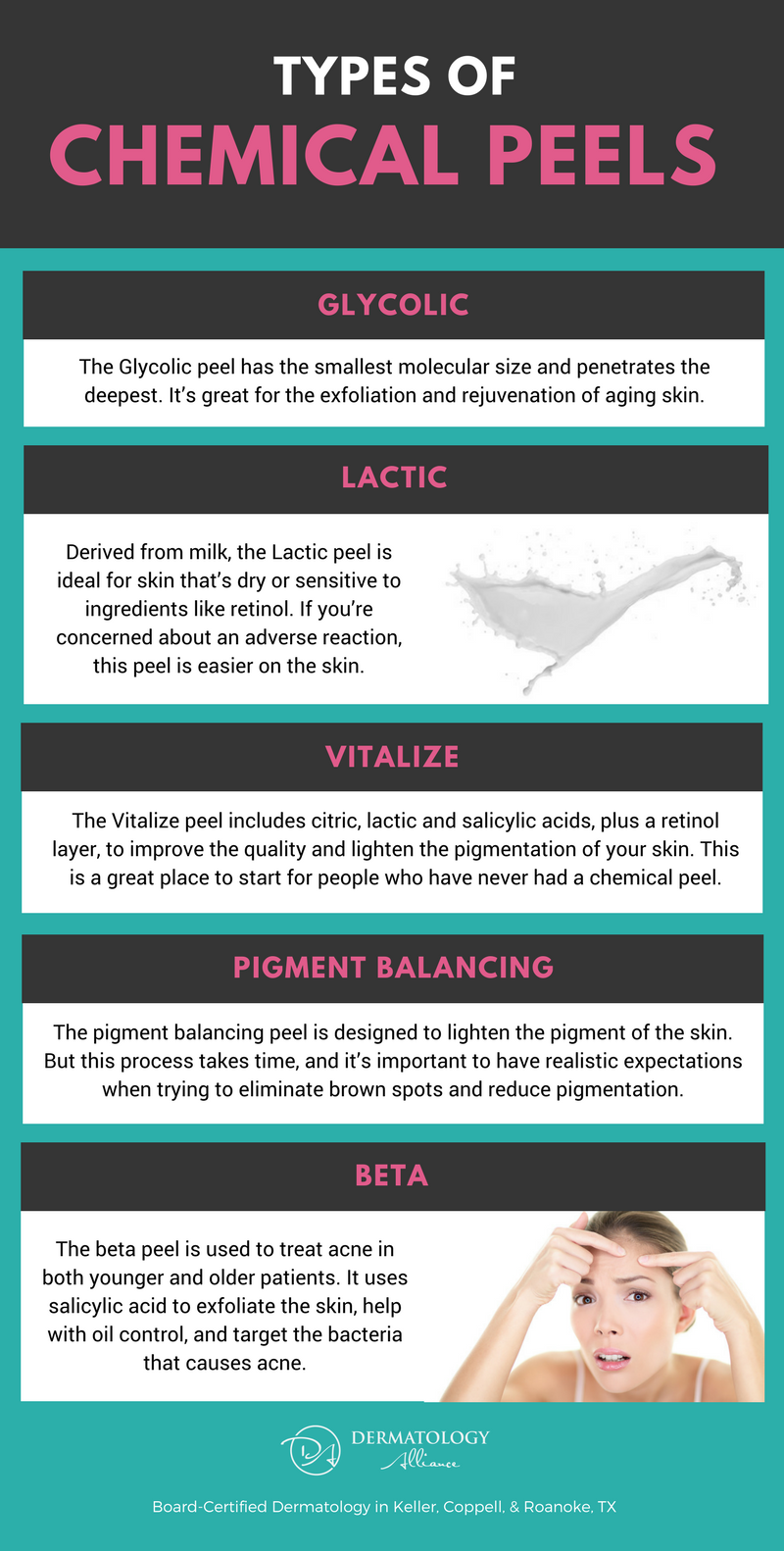Most people have heard the term “chemical peel,” but unless they’ve actually had one, they have no idea what it is or how it works. They also probably don’t realize that there are several kinds of peels, including brand new peels that are great for improving the appearance of the skin.
Let’s start by discussing the different types of peels and how they’re used.
Types of Chemical Peels
Glycolic Peel
The glycolic peel has the smallest molecular size and penetrates the deepest. It’s great for the exfoliation and rejuvenation of aging skin. Glycolic peels come in different strengths, depending on the results you’re looking for.
Lactic Peel
Derived from milk, the lactic peel is ideal for skin that’s dry or sensitive to active ingredients like retinol. If you’re concerned about having an adverse reaction, the lactic peel is easier on the skin.
Beta Peel
The beta peel is used to treat acne in both younger and older patients. It uses salicylic acid to exfoliate the skin, help with oil control, and target the bacteria that causes acne.
Vitalize Peel
The Vitalize peel includes citric, lactic and salicylic acids, plus a retinol layer, to improve the quality and lighten the pigmentation of your skin. A vitalize peel is superficial with very little peeling, so this is a great place to start for people who have never had a chemical peel.
Pigment Balancing Peel
Using a formulation of acids, the pigment balancing peel is designed to lighten the pigment of the skin. It’s important to have realistic expectations when trying to eliminate brown spots and reduce pigmentation. This process takes time, and you need to use sunscreen for the pigment balancing peel to have the desired effect.
TCA Peel for Actinic Keratosis
TCA is trichloroacetic acid used to provide a medium depth peel to the skin. This treatment can help to remove abnormal skin cells. There are significant cosmetic benefits to this procedure as well.
What Should I Expect?
Chemical peels should be done in a series of three to six peels. For the best results, we recommend a series of six peels, three weeks apart.
Depending on the type of peel, you may notice a mild tingling sensation or feel heat on the skin. Some acids are neutralized by us and some acids are self-neutralizing, so they keep working after you leave.
By the second or third day, you’ll notice peeling or flaking around the mouth and then the forehead. If you keep your skin well-hydrated, it will continue to peel for seven to 10 days.
What Should I Avoid?
It’s important that you don’t generate any additional heat during the first 48 hours. Because layers of your skin have just been exfoliated off, exposing a fresh new layer, your skin will be more susceptible to burning. Avoid exercise and hot baths. Sunscreen is a must whenever you leave the house, even if you’re only getting in and out of the car.
You should also avoid the use of harsh exfoliants or active cleansers (benzoyl peroxide or salicylic acid) for 2 weeks after your treatment. Avoid topical medications such as Ziana, Atralin and Differin for 10 days following your treatment. As skin begins to flake and peel, do not pull, scrub or pick at skin.
There are do-it-yourself chemical peels on the market, but it’s always a good idea to see a trained professional. If you’d like to find out what type of chemical peel is right for you, please contact us to schedule a consultation.

Dr. R. Todd Plott is a board-certified dermatologist in Coppell, Keller, and Saginaw, TX. His specialization and professional interests include treating patients suffering with acne, identifying and solving complex skin conditions such as psoriasis, rosacea, atopic dermatitis, and identifying and treating all types of skin cancers. In his spare time, Dr. Plott enjoys cycling, traveling with his wife, and spending time with his children and new grandson.
Learn more about Dr. Plott.


